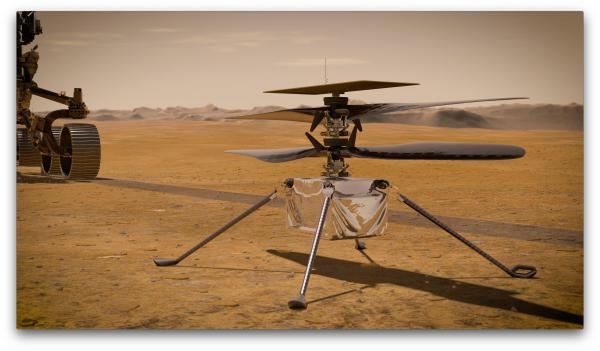While NASA’s Perseverance rover brought an array of impressive scientific equipment to the surface of Mars, certainly its most famous payload is the stowaway helicopter Ingenuity. Despite being little more than a restricted-budget experiment using essentially only off-the-shelf components that you can find in your smartphone and e-waste drawer, the tenacious drone managed to complete its fiftieth flight on April 13 — just days before the two year anniversary of its first flight, which took place on April 19th of 2021.
Engineers hoped that Ingenuity would be able to show that a solar-powered drone could function in the extremely thin atmosphere of Mars, but the experiment ended up wildly exceeding expectations. No longer a simple technology demonstrator, the helicopter has become an integral part of Perseverance’s operations. Through its exploratory flights Ingenuity can scout ahead, picking the best spots for the much slower rover, with rough terrain only becoming a concern when it’s time to land.
Since leaving the relatively flat Jezero Crater floor on January 19th of 2023, Ingenuity has had to contend with significantly harsher terrain. Thanks to upgraded navigation firmware the drone is better to determine safe landing locations, but each flight remains a white-knuckle event. This is also true for each morning’s wake-up call. Although the rover is powered and heated continuously due to its nuclear power source, Ingenuity goes into standby mode overnight, after which it must re-establish its communication with the rover.
Though there’s no telling what the future may hold for Ingenuity, one thing is certain — its incredible success will shape upcoming missions. NASA is already looking at larger, more capable drones to be sent on future missions, which stand to help us explore the Red Planet planet faster than ever. Not a bad for a flying smartphone.
Continue reading “NASA’s Ingenuity Mars Helicopter Completes 50th Flight”



















